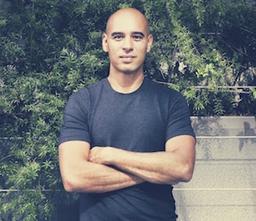Sometimes, our heads won’t stop thinking about something. Our thoughts will spin around and around, not willing to let go, obsessing. It might be about another person, a big event coming up, or about ourselves. It might be overthinking a decision, big or small.
There’s nothing wrong with this. It’s a human thing to do, to overthink or obsess about something we’re worried or frustrated about. It’s a sign that we’re feeling fear and uncertainty, and our brains are trying to solve it.
Sometimes, though, it can be liberating to let go of that kind of thinking. It can lead to better sleep, peace of mind, and a simplicity of living. So how can we do that?
I’ll share a process for that briefly here:
- Notice. Often when we’re caught up in a loop or overthinking, we aren’t aware of it. It seems like the right thing to do, to keep thinking about this thing that’s worrying us. But to break out of the loop, we have to notice we’re in it. What signs have you noticed will point out to you that you’re in a loop? For many people, it’s a rising amount of anxiety or worry, an inability to sleep, an inability to focus. For others, it might be a desire to lash out at someone, or to plan or otherwise get control. The key is just to notice you’re in it.
- Turn toward the underlying fear. Once you’ve noticed, the magic trick is to look beyond the thing you think needs to be solved… to the fear underneath. It’s like not looking at the hand the magician is trying to direct your attention to, but to their other hand that is hiding the coin. Don’t look at the object of your thoughts or the problem you need to solve… but the fear that’s having you want to obsess and overthink. What are you feeling right now, in your body?
- Be with the fear. Before we let go of the overthinking, we have to be with the feeling of fear that’s in our body. Otherwise, it’s like trying to calm a freaked out child by ignoring them. What if instead we could be with the fear and relax with it, so it can relax? Can you feel the fear, as sensation, and stay with it? Can you breathe deeply and slowly, so you can slow your heartbeat and relax with the fear? Can you bring curiosity towards it? If it’s challenging, you might think of it as being with your heart.
- Ask what’s needed. Ask what your fear could use right now — some compassion, some music, a nice cup of tea, journaling or a walk? Then ask what’s needed in the situation you’re overthinking — what’s the simplest thing that you could do here, what’s the simplest way you could speak from the heart? Then trust that, breathe, and move to the present moment.
- Turn toward something right in front of you. What’s something right in front of you, that you could focus on? For me, it might be the light in the room, nature, another person. Or it might be answering an email or writing a blog post. Something simple, right in front of me. I trust that what I’ve chosen from the heart will suffice, and then I focus on something in the here and now.
This story was originally published in the Zen Habits Blog.






